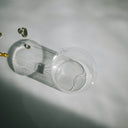Hair loss can be a distressing experience, and when it occurs in conjunction with a cancer diagnosis, it can intensify feelings of anxiety and uncertainty. Understanding the types of cancer that lead to hair loss, as well as the reasons behind this phenomenon, is crucial for patients and their families. This article will provide a comprehensive overview of the cancers that are most commonly associated with hair loss and offer insights into the underlying mechanisms at play.
Table of content
What type of cancer causes hair loss?
Hair loss is primarily associated with cancers that require chemotherapy as part of their treatment regimen. The most common types of cancer that lead to hair loss include breast cancer, leukemia, lymphoma, and ovarian cancer. Chemotherapy drugs target rapidly dividing cells, which include not only cancer cells but also hair follicle cells, resulting in hair thinning or complete loss. In addition to chemotherapy, other factors such as radiation therapy and certain hormonal treatments can also contribute to hair loss in cancer patients.
Breast cancer is one of the most frequently diagnosed cancers in women, and many patients undergoing chemotherapy for breast cancer experience hair loss. The specific drugs used in treatment, such as anthracyclines and taxanes, are known for their potential side effects, including alopecia.
Leukemia, a cancer of the blood and bone marrow, often necessitates aggressive chemotherapy, which can lead to significant hair loss. Hair may fall out in clumps, and patients may experience changes in texture or color as well. The same is true for lymphoma, particularly in cases where chemotherapy is used to combat the disease.
Ovarian cancer treatments can also result in hair loss, as many patients receive chemotherapy that impacts hair follicles. The psychological impact of hair loss can be significant, prompting many patients to seek support or explore options for wigs and head coverings.
In addition to these cancers, other malignancies that involve chemotherapy, such as testicular cancer, lung cancer, and certain types of head and neck cancers, may also lead to hair loss. It's important to note that not all cancer treatments will result in hair loss, and the extent of hair loss can vary widely among individuals.
As your leading source for hair health information over the past 4 years, we never compromise on accuracy. When it comes to your health, you deserve information you can truly rely on - and earning your trust is our top priority.
Here's how Scandinavian Biolabs ensures every piece of content meets the highest standards of accuracy and integrity:
- Credentialed Experts: Our reviewers are actively practicing doctors and medical researchers
- Stringent Reviews: Content undergoes rigorous editing by subject specialists and review by a practicing doctor.
- Evidence-Based: We rely on well-established research from trusted scientific sources like peer-reviewed journals and health authorities.
- Full Transparency: Our editorial standards, writer credentials, reviewer credentials, correction process, and funding are all publicly documented.
- Independent Voice: While we do promote products, we operate in a vacuum to business operations. Our main goal is just an unwavering commitment to providing medically-sound guidance.
You can count on Scandinavian Biolabs to consistently deliver the trustworthy health information you deserve. Read our Editorial Standards.
Understanding the Mechanism Behind Hair Loss in Cancer
The mechanism of hair loss in cancer patients is primarily related to the effects of chemotherapy on rapidly dividing cells. Hair follicles are among the fastest-growing cells in the body, making them particularly vulnerable to the effects of chemotherapy drugs. When these drugs circulate through the body, they can inadvertently damage hair follicles, leading to hair loss.
The timing and extent of hair loss can vary based on the specific drugs used and the individual's response to treatment. Hair loss may start within a few weeks of beginning chemotherapy and can continue throughout the treatment cycle. Some patients may notice their hair becoming thinner before it starts to fall out, while others may experience a more sudden loss.
Other Factors Contributing to Hair Loss
While chemotherapy is a primary cause of hair loss for many cancer patients, other factors can also contribute. For instance, radiation therapy, which is used to target specific areas of cancer, can lead to hair loss in the treated region. Hormonal therapies, often used in cancers such as breast or prostate cancer, may also result in hair thinning or loss.
In addition to treatment-related factors, emotional stress associated with a cancer diagnosis can play a role in hair loss. Stress can lead to a condition known as telogen effluvium, where hair follicles prematurely enter the resting phase, resulting in increased shedding. This type of hair loss is usually temporary and resolves as stress levels decrease.
Managing Hair Loss During Cancer Treatment
For many cancer patients, hair loss can be one of the most challenging aspects of their journey. However, there are several strategies to manage this side effect. Patients may consider the following options:
- Wigs and Head Coverings: Many patients find comfort in wearing wigs, scarves, or hats. There are numerous resources available that provide assistance in selecting wigs that match their natural hair.
- Support Groups: Connecting with others who have experienced similar challenges can provide emotional support and practical advice.
- Hair Care Products: Gentle hair care products can help minimize damage to remaining hair and promote scalp health.
- Scalp Cooling Caps: Some patients may benefit from using scalp cooling caps during chemotherapy sessions, which can help reduce the risk of hair loss by cooling the scalp and constricting blood vessels.
Conclusion
Understanding the relationship between cancer and hair loss is essential for patients navigating their treatment options. While hair loss can be distressing, it is often a temporary side effect of aggressive treatments such as chemotherapy and radiation. By exploring available resources and support systems, patients can find ways to cope with hair loss during their cancer journey. Always consult with healthcare providers to discuss potential side effects and strategies to manage them effectively.
Tired of Thinning Hair? Try a Clinically Tested Serum.
Looking for a natural way to regrow hair and achieve a thicker, fuller head of hair? Ditch the stinging nettle for hair loss – Bio-Pilixin Serum is a drug-free hair activation serum that delivers clinically tested results.
Here's why Bio-Pilixin is superior:
- Clinically Tested Results: 93% of users saw a reduction in hair loss, and 73% experienced increased hair density.
- Safe and Natural: Unlike harsh chemicals, Bio-Pilixin uses plant growth factors derived from stem cell technology to nourish hair follicles and stimulate growth.
- Fast-Acting: See visible results in as little as 45 days (most typically see results within 150 days).
Stop wasting time on unproven remedies. Bio-Pilixin is the safe, natural serum you've been searching for.
Read more:






